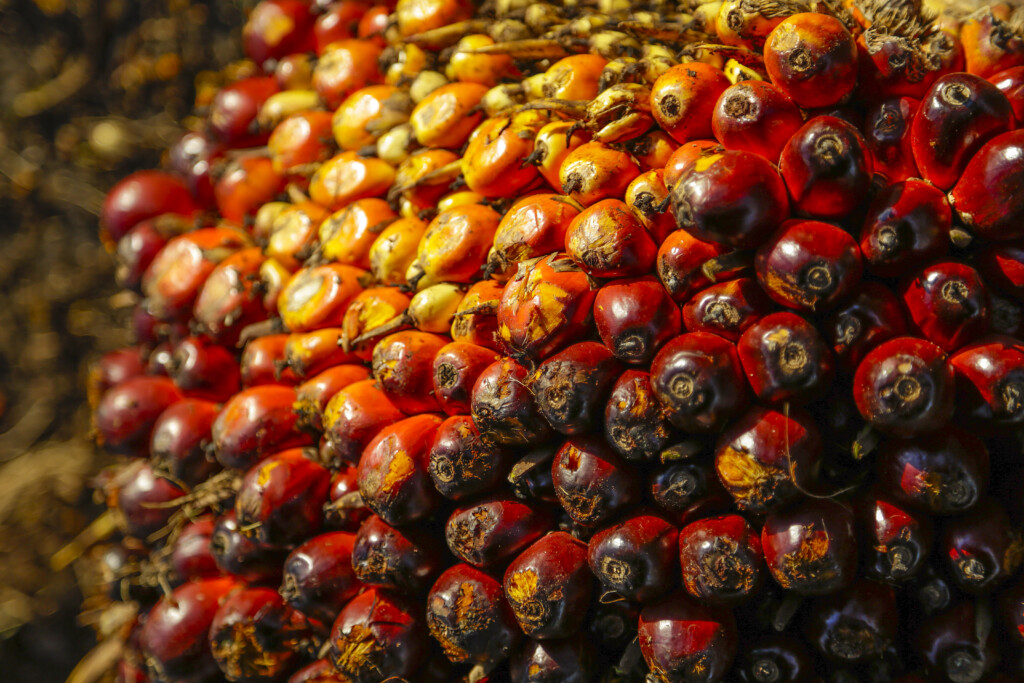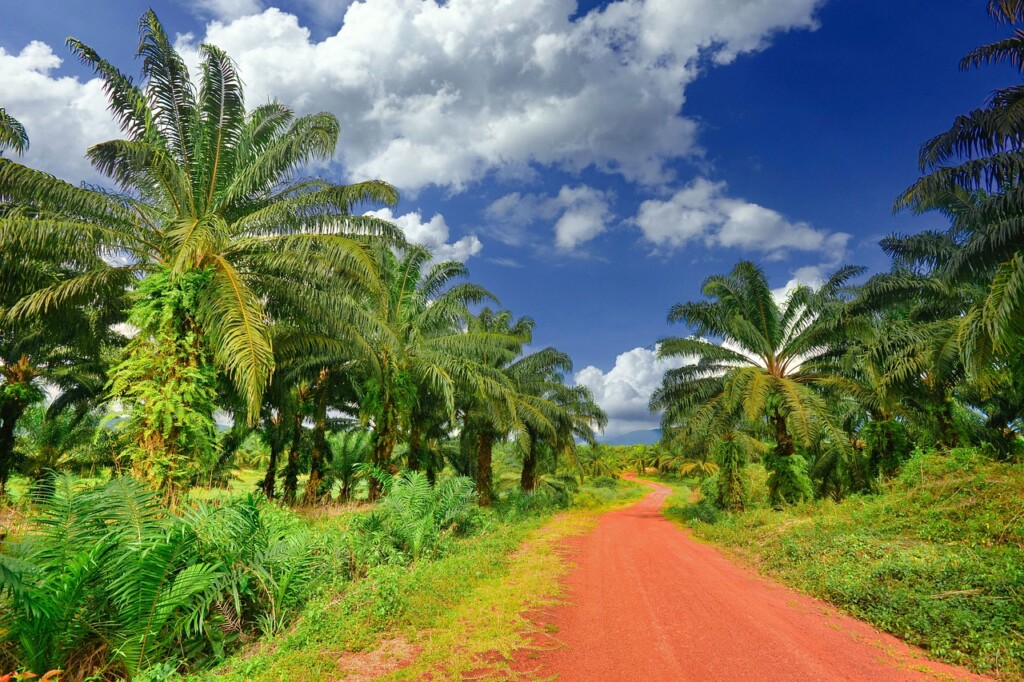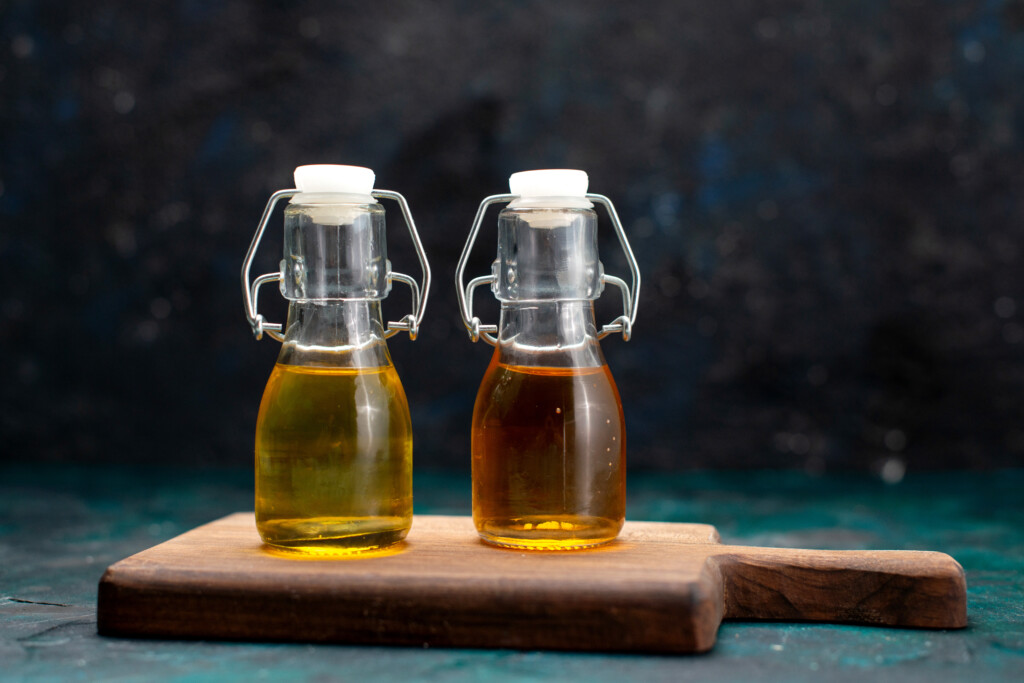At first glance, palm oil might just seem like another ingredient on your snack’s label, but this humble oil is a giant in the world of commodities. Extracted from the vibrant fruit of the oil palm tree, palm oil has stealthily found its way into an astonishing array of products — from your morning cereal and favorite lipstick to the biofuel powering buses. Its widespread use owes to its impressive versatility and efficiency; palm oil plants are champions in oil production, beating out soy and canola by miles. But there’s a catch — this efficiency comes with significant environmental baggage, making it a paradoxical player in the global market.
The story of palm oil is as rich and complex as its deep, golden hue. Long before it lined supermarket shelves, palm oil was a staple in African households, revered for its nutritional and medicinal qualities. The oil’s journey from local kitchens to global dominance is a classic tale of economic transformation, with European traders in the 19th century catapulting it into the spotlight as an industrial wonder-oil.
Fast forward to today, and palm oil is a cornerstone of the modern global economy, especially in Malaysia and Indonesia, who reign as the oil’s top producers. However, as palm oil plantations sprawl across tropical landscapes, the environmental enthusiast in us can’t help but question: at what cost does this golden oil come?
People are becoming much more alert to sustainability and health issues around the ingredients in the foods they are regularly buying, and palm oil is one of those ingredients that raises questions about both.
Charlotte Borger

The dark side of palm oil’s global demand is starkly evident in the lush rainforests of Indonesia and Malaysia, rapidly disappearing under the shadow of palm plantations. This rampant deforestation is more than just a loss of trees; it’s a crisis for the rich tapestry of life these forests harbor. Iconic species like orangutans, tigers, and countless others are teetering on the brink as their habitats vanish. But it’s not just the fauna; entire ecosystems, vital for local climate regulation and indigenous communities, are being dismantled, piece by piece. This biodiversity loss is a silent emergency, echoing far beyond the forests’ boundaries.
Palm oil’s environmental footprint extends to the skies. The clearing of peatlands, carbon-rich swamps where palm oil is often planted, releases massive amounts of greenhouse gases. These emissions are a double whammy; not only does the burning of peatlands send CO2 sky-high, but the drained peat also decomposes, releasing even more carbon. This makes the palm oil industry a significant contributor to global warming, turning a once-carbon sink into a carbon bomb.
The story of palm oil’s environmental impact digs down to the soil and water. Intensive plantation practices lead to soil erosion and depletion of vital nutrients, rendering the land less fertile for future crops. Furthermore, the heavy use of fertilizers and pesticides in these plantations is a recipe for water pollution. Chemical runoff into rivers and streams can have devastating effects on aquatic life and local water sources, impacting both ecosystems and human communities. This cycle of degradation poses a severe challenge, not just for the present, but for the sustainability of these environments in the long run.
Palm oil might be a staple in our pantries, but its impact stretches far beyond our kitchens. It’s a major economic force in some countries, yet it’s also a source of deep social upheaval in local communities. Let’s peel back the layers and take a closer look at how this ubiquitous oil is reshaping lives and economies.
Local Communities: Imagine living off a land for generations, only to watch it turn into an endless sea of palm trees. For many indigenous and rural communities, the palm oil boom has been a mixed bag. Sure, some find jobs on the plantations, but often at the expense of their traditional ways and land rights. There’s a constant push-pull between preserving a way of life and adapting to the new ‘green gold’ economy. These communities are grappling with a tough question: how do you hold onto your heritage when the very land it’s based on is slipping away?
Economic Significance: Palm oil isn’t just another crop; it’s a cornerstone of the economy in countries like Indonesia and Malaysia. It’s like striking oil – but the green kind. This industry creates jobs, drives exports, and is a major player on the world stage. But here’s the catch: this financial windfall doesn’t always make its way to the small-time farmers. Instead, it’s the big corporations that tend to reap the benefits. And let’s not forget, when your economy is tied to one big commodity, it’s a bit like putting all your eggs in one basket – risky if global markets wobble. The big question is, can these countries turn this green gold into lasting prosperity that benefits everyone?

Palm oil is a subject of intense debate not only among environmentalists but also among health enthusiasts. As a prevalent ingredient in numerous food products, it’s important to delve into its nutritional aspects and associated health concerns. Let’s explore the dual nature of palm oil’s nutritional profile and its controversial role in the food industry.
Nutritional Profile of Palm Oil: Palm oil presents a paradox in nutrition. On one side, it’s a source of vitamin E and a mix of saturated and unsaturated fats, which can be beneficial in a balanced diet. However, it’s the high saturated fat content, accounting for about 50% of its composition, that sparks health debates. This level of saturated fat can be a concern for heart health, especially regarding cholesterol levels. On the plus side, palm oil is free from trans fats, often seen as a healthier alternative to hydrogenated oils. The takeaway? It’s all about balance and moderation when it comes to including palm oil in your diet.
Health Concerns: Palm oil’s role in the food industry is significant due to its affordability, stability, and ability to extend product shelf life. The catch here is the processing: refining palm oil for food products can diminish some of its nutritional benefits, leaving mainly the high saturated fat content. This has sparked discussions about its contribution to diet-related health issues like obesity and cardiovascular diseases. Coupled with environmental concerns, palm oil consumption presents a multifaceted dilemma. Consumers are now weighing the pros and cons, balancing the convenience and taste of palm oil-enhanced products against potential health risks and environmental repercussions.

The conversation around palm oil isn’t just black and white; there’s a growing grey area focused on ‘sustainable’ palm oil. Is it a real solution or just a feel-good label? Let’s unpack the facts, the fiction, and the ongoing efforts in this complex journey towards sustainability.
Sustainable palm oil is supposed to be the industry’s answer to environmental and social concerns. But what does it really mean? Essentially, it’s about producing palm oil without causing deforestation, harming wildlife, or impacting local communities negatively. Organizations like the Roundtable on Sustainable Palm Oil (RSPO) have set standards and offer certifications to producers who comply. But here’s the twist: not all ‘sustainable’ labels are created equal, and the effectiveness of these certifications is often debated. It’s a step in the right direction, but the road to truly sustainable palm oil is still under construction.
Dreaming of a world where palm oil production harms neither forests nor communities is one thing; making it a reality is another. The biggest hurdles? Ensuring transparency and compliance across a sprawling, global supply chain. Plus, there’s the issue of balancing the booming demand with sustainable practices. Smallholder farmers, who play a big role in this industry, often struggle with the costs and complexities of certification. It’s a high-stakes game of trying to protect the environment while also safeguarding livelihoods.
In exploring sustainable palm oil, we encounter a landscape where success and failure coexist. Initiatives like Waitrose’s push to go ‘forest positive’ and the empowerment of smallholders in Sierra Leone showcase how sustainable practices can genuinely benefit both the environment and local communities. These efforts, alongside the remarkable transformations of farmers like Sunarno and Suhaili in Indonesia, demonstrate the positive impact of sustainable practices at a grassroots level.
However, this optimism is countered by the harsh reality in places like Malaysian Borneo. Here, RSPO-certified plantations, once lush rainforests teeming with wildlife, stand as a stark reminder of the challenges in achieving true sustainability. The certification of these plantations, despite their deforested past, highlights a significant gap in the current sustainability standards.
These contrasting scenarios emphasize the complexity of sustainable palm oil production. They illustrate that while progress is being made, there remains a critical need for more stringent, transparent standards and practices. This balance of successes and failures offers a nuanced understanding of the current state of sustainable palm oil and underscores the importance of continued vigilance and commitment to truly sustainable practices in the industry.
The role of consumers in shaping the palm oil industry is pivotal, especially in the context of sustainability. The growing awareness and demand for sustainable palm oil have been fueled by both consumers and non-governmental organizations, who are actively urging producers, retailers, and companies to adopt more sustainable practices. Despite these efforts, challenges persist.
Only about 20% of global palm oil companies have achieved RSPO accreditation, and problematic producers continue to contribute to environmental degradation. This slow uptake is largely due to the high costs associated with producing sustainable palm oil, which makes it less attractive to manufacturers and retailers.
Consumers, however, can play a significant role in promoting sustainable palm oil. By consciously choosing products that use sustainable palm oil and reducing overall consumption of palm oil products, consumers can directly influence the market. Additionally, consumers can advocate for sustainability by demanding that brands use sustainable palm oil, educating others about making sustainable choices, and utilizing tools like the Palm Oil Buyers Scorecard to make informed decisions.
Making palm oil at home using sustainable materials and choosing whole foods over processed items are other ways consumers can contribute. It’s important to recognize that while all vegetable oils require agriculture, which exploits natural resources, choosing the most sustainable options, such as organic, fair trade, non-GMO, unrefined, and cold-pressed oils, can mitigate environmental impact.

Exploring alternatives to palm oil presents a complex picture, reflecting both the challenges and the potential for more sustainable solutions. Palm oil’s ubiquity in consumer goods—from food products to personal care items—and its role as a biofuel make it a tough act to follow, especially considering its high yield and lower production costs compared to other oil crops like soy, rapeseed, and sunflower. The environmental damage caused by palm oil cultivation, particularly in biodiverse regions like Indonesia and Malaysia, underscores the need for viable alternatives.
Recent advances in bioengineering have opened doors to innovative solutions. Companies like Xylome are developing microbial oils as potential substitutes for palm oil. These oils, produced by engineered yeasts, mimic the properties of palm oil, which is valued for its unique blend of fats ideal for various applications, including chocolate coatings, soaps, and cosmetics. However, scaling up production to compete with palm oil remains a significant challenge, both in terms of cost and the potential impact on livelihoods in palm oil-producing regions.
Other companies, such as C16 Biosciences, are also focusing on microbial oils. They aim to replace palm oil in personal care and food industries with their product, addressing the conflict between the high yields of oil palm trees and the need to protect tropical rainforests. This initiative aligns with the increasing pressure from consumers and governments for environmentally friendly alternatives.
Finding a direct replacement for palm oil is challenging. Other tropical oils like coconut oil have lower yields and would have greater environmental impacts if cultivated at the same scale. Non-tropical oils like soy or corn require additional processing, making them less viable alternatives.
In summary, while efforts to find sustainable alternatives to palm oil are advancing, significant hurdles remain. These include the challenge of scaling up production cost-effectively and navigating the socio-economic impacts of shifting away from a major cash crop like palm oil. The ongoing research and development in this field suggest a cautious optimism for the future, with the potential for innovative solutions that balance environmental sustainability with economic viability.
To wrap it up, it’s essential to recognize the complexity of the palm oil issue. Balancing the needs for economic growth, environmental sustainability, and societal wellbeing is no small task. The transition to sustainable palm oil production presents significant obstacles, but it also brings opportunities for innovation and transformation. With dedicated research and development, along with responsible consumer choices, it’s possible to foster industry practices that lessen environmental harm while supporting livelihoods.
Furthermore, the emergence of sustainable alternatives to palm oil shows promise; however, their effective implementation hinges on addressing scalability and socio-economic considerations. Ultimately, the journey towards true sustainability in palm oil production is a shared responsibility – one that calls for the concerted efforts of producers, consumers, governments, and international organizations. It’s a narrative of cautious optimism, where every decision made today bears long-term implications for our planet and future generations.
Stay a while and read more posts like this
Let’s devote a few minutes to envision our world in 2100. It’s quite a thought experiment, given the dramatic transformations our planet has experienced in...
With climate change looming large, the world is embarking on a quest for solutions to heal our ailing planet. Solar geoengineering emerges as a burgeoning field,...
Taking on parenthood comes with unique choices that factor in more than just our family’s immediate needs. For modern parents, who are not just guardians of...